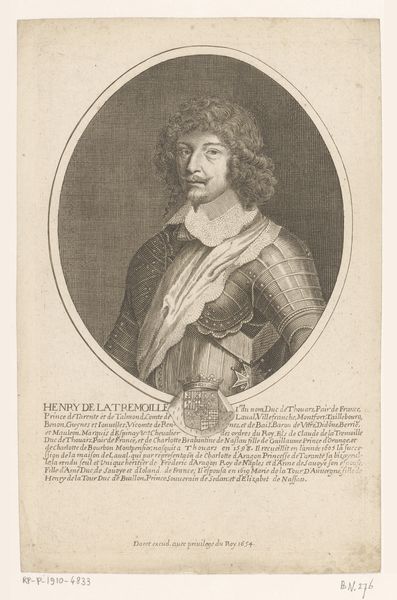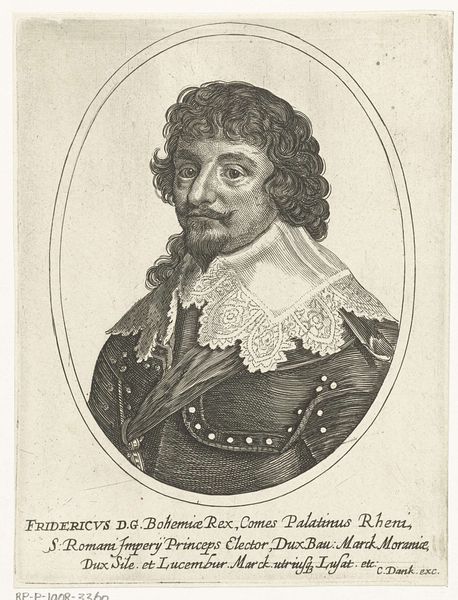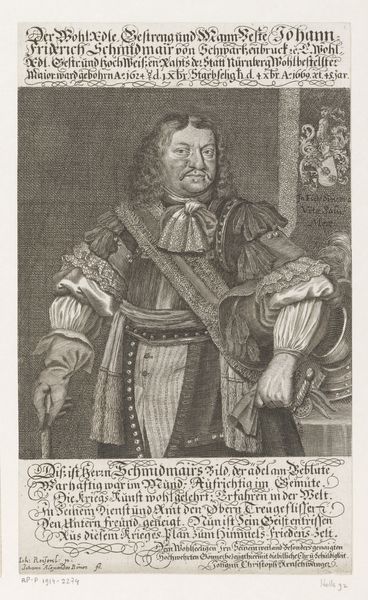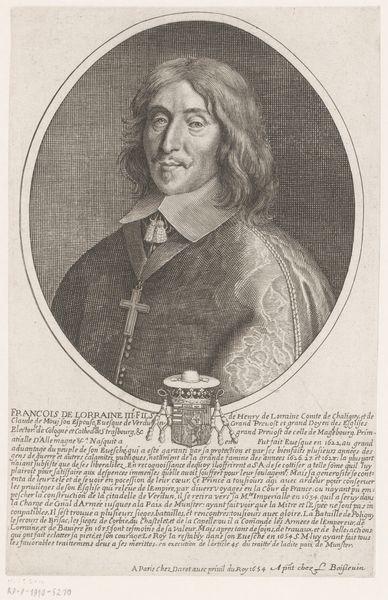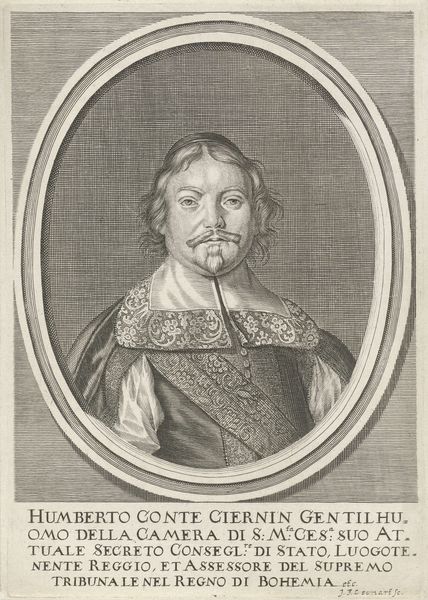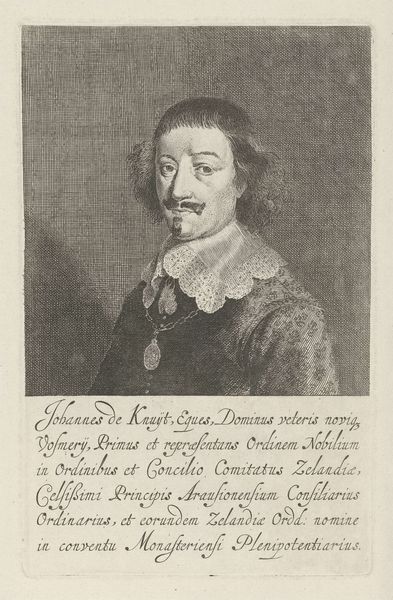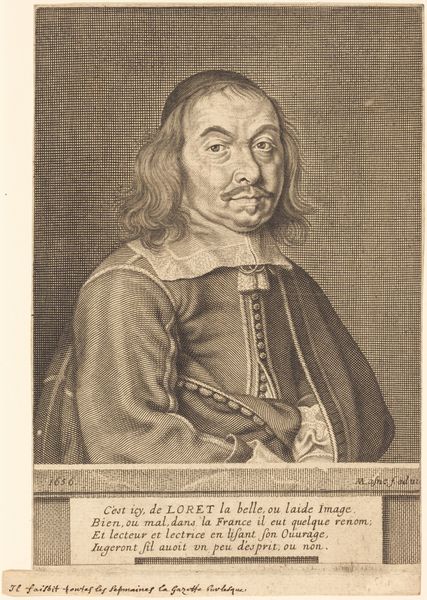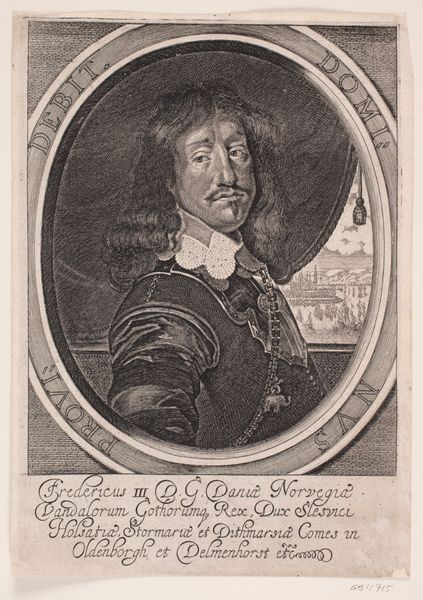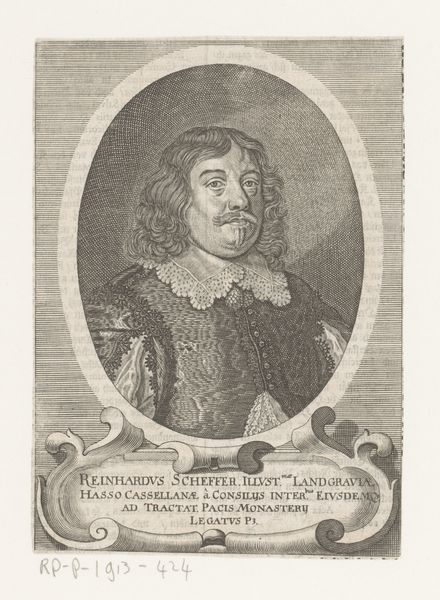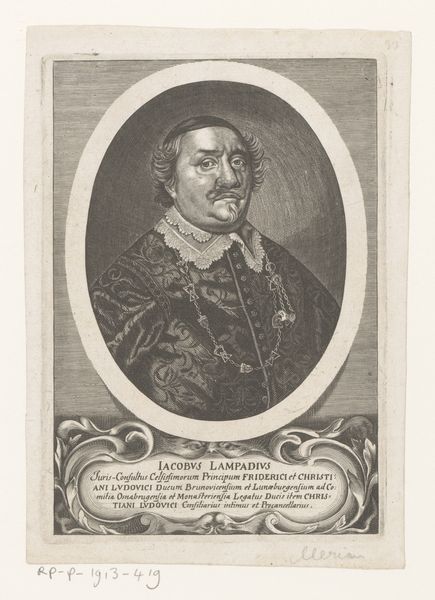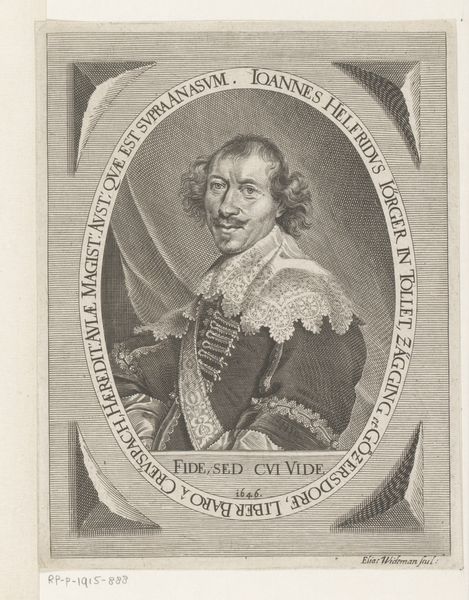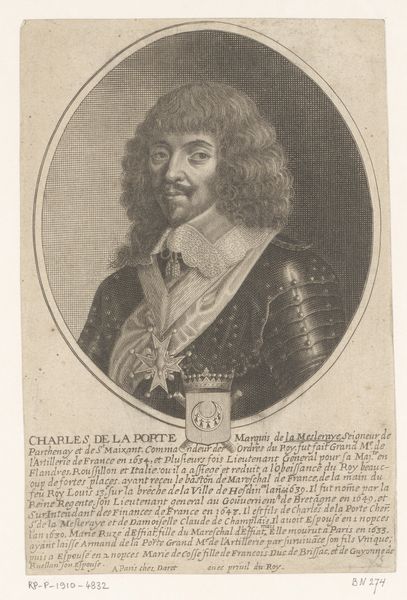
print, engraving
#
portrait
#
baroque
# print
#
old engraving style
#
engraving
#
realism
#
monochrome
Dimensions: height 208 mm, width 133 mm
Copyright: Rijks Museum: Open Domain
Editor: This is a portrait of Willem van Ripperda, made sometime between 1644 and 1664 by Pieter Nolpe. It’s an engraving, which gives it this intricate, almost photographic quality in monochrome. I'm struck by how…official it feels, like it's meant to convey power. What do you see in it? Curator: Indeed, its function within the visual culture of the Dutch Republic is critical. Prints like these circulated widely. They shaped public perceptions, cementing Ripperda's status. Consider who commissioned this. Was it a personal endeavor or one driven by broader political ambitions? Editor: That’s interesting! I hadn’t considered the commission. So, this image served more than just a likeness? Curator: Absolutely. These images played a part in constructing identity and projecting power. Think about the setting, his attire, the text. What statements are being made about Ripperda’s lineage, his position within society? Editor: The Latin text underneath certainly emphasizes his titles and affiliations. So, the portrait is part of a larger effort of branding, of cultivating a certain image. It is very formal. Curator: Precisely. And the choice of engraving is important. Prints had a democratizing effect, making images like these accessible to a wider audience than painted portraits, reinforcing political and social structures of the time. It becomes less about the individual Willem van Ripperda and more about what he represents. Editor: So, it's less about art for art’s sake and more about the role of images in society. Thanks, it really shifted my perspective. Curator: My pleasure. Analyzing art's public role helps us understand its broader historical and political context.
Comments
No comments
Be the first to comment and join the conversation on the ultimate creative platform.
